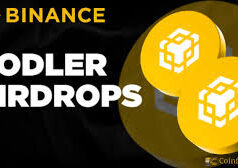A Deep Dive into the Controversy
Binance Alpha, launched in December 2024, has taken the crypto world by storm, offering users early access to Web3 projects through Token Generation Events (TGEs) and exclusive airdrops. With trading volumes hitting $2.8 billion and a track record of delivering substantial rewards—averaging $1,804 per user on Day 1 in May 2025 alone—it’s no surprise that Binance Alpha is reshaping how new tokens reach the market. However, not everyone is celebrating. A growing chorus of crypto enthusiasts, amplified by the #StopBinanceAlpha hashtag, argues that the platform is “killing airdrops” and undermining the decentralized ethos of crypto. So, is Binance Alpha truly stifling airdrop culture, or is it simply evolving it? Let’s explore both sides of the debate.
What is Binance Alpha?
Binance Alpha is a feature within the Binance Wallet that serves as a launchpad for early-stage Web3 projects. Users earn Alpha Points through activities like holding eligible assets, trading Alpha tokens, or engaging with the Binance ecosystem. These points determine eligibility for airdrops and TGEs, where users can purchase tokens at discounted rates before public listings. Since its debut, Binance Alpha has listed over 140 projects, with 43% of 2025 Binance Spot listings originating from the platform. Notable airdrops, like NXPC ($788 at ATH) and DOOD ($415 at ATH), have delivered significant returns, making it a magnet for airdrop hunters.
The Case Against Binance Alpha: “Killing Airdrops”
Critics argue that Binance Alpha is centralizing and commercializing airdrops, eroding their original purpose. Here’s why some believe it’s “killing” the airdrop ecosystem:
- Centralized Control Over Rewards
Traditional airdrops reward on-chain activity, such as interacting with a project’s testnet or holding specific tokens. Binance Alpha shifts this dynamic by tying rewards to centralized engagement within its ecosystem. Users must hold assets in Binance Wallet or trade Alpha tokens to earn points, sidelining those who engage directly with blockchains. This has sparked backlash, with some claiming it prioritizes “token tourists” over early adopters who contribute to project development through testnets. A crypto investor’s rant on X, which birthed the #StopBinanceAlpha movement, highlighted how testnet users often receive negligible rewards compared to Binance Alpha participants. - High Costs and Strict Requirements
Earning Alpha Points requires active trading or significant asset holdings, which can be costly. For example, to qualify for the SXT airdrop, users needed 150 points, equivalent to trading up to $131,072, with daily gas fees adding up. The 15-day validity period for Alpha Points forces continuous trading to maintain eligibility, creating financial pressure. Critics like Abhi.eth have called it a “scheme to rekt you without you noticing,” arguing that Binance profits from transaction fees while users struggle to meet rising point thresholds. - Undermining Decentralization
Airdrops were designed to decentralize token ownership and build community-driven projects. Binance Alpha’s model, which funnels rewards through a centralized exchange, is seen by some as eroding this ethos. Dovey Wan, founder of Primitive Ventures, noted that Binance Wallet’s 80% market share in swaps—bolstered by Alpha—has marginalized competitors like MetaMask and OKX Wallet, centralizing control over early token distribution. Critics argue this stifles the permissionless nature of crypto, turning airdrops into a pay-to-play system. - Bot Crackdowns and Fairness Concerns
Binance’s recent crackdown on bot activity in the Alpha Points program, announced on June 4, 2025, aimed to ensure fairness but has fueled further criticism. While the exchange upgraded its risk control systems to detect coordinated bot farming, some users feel the strict enforcement and token review framework exclude genuine participants who fail to meet stringent criteria, further limiting access to rewards.
The Case for Binance Alpha: Evolving Airdrops
Despite the backlash, supporters argue that Binance Alpha is not killing airdrops but modernizing them, offering a structured, secure, and lucrative alternative. Here’s their perspective:
- Lucrative Returns for Users
Binance Alpha’s May 2025 airdrops delivered an average of $1,804 per user on Day 1, peaking at $3,231 at all-time highs. Projects like NXPC, which debuted on Upbit and Bithumb alongside Binance Alpha, saw $300 million in trading volume within six hours, highlighting the platform’s ability to provide early liquidity and significant gains. Supporters like Wonnie, founder of MBMweb3, call it a “golden window” for users, requiring minimal costs (e.g., $1 daily gas fees for 15 points). These returns demonstrate Alpha’s value for active participants. - Simplified Access to Early Projects
Unlike traditional airdrop hunting, which requires navigating complex DeFi protocols or third-party wallets, Binance Alpha streamlines the process within a trusted ecosystem. Users don’t need external wallets or technical expertise—just a verified Binance account and consistent activity. The platform’s integration with Binance Wallet eliminates gas fees for token purchases, reducing friction and making airdrops more accessible to beginners. - Quality Control and Scam Protection
Binance Alpha’s token review framework ensures only vetted projects are featured, reducing the risk of scams that plague traditional airdrops. By curating high-potential tokens, like Huma Finance (HUMA) and Puffverse (PFVS), Alpha protects users from fraudulent campaigns. The platform’s 50% success rate in transitioning tokens to Binance Spot listings underscores its ability to identify promising projects. - Driving Web3 Innovation
Binance Alpha provides projects with instant liquidity and access to millions of users, accelerating their growth. For instance, NXPC, issued by Nexon’s blockchain subsidiary on Avalanche, leveraged Alpha for early exposure before hitting major exchanges. This benefits both projects and users, who gain early access to tokens with high growth potential, often at 8-9x discounts compared to public listings.
The Bigger Picture: Centralization vs. Opportunity
The debate over Binance Alpha boils down to a tension between centralization and opportunity. Critics argue it undermines the decentralized spirit of airdrops by prioritizing Binance’s ecosystem, marginalizing testnet users, and imposing high costs. Supporters counter that it offers a safer, more accessible way to engage with Web3 projects, delivering substantial rewards and driving innovation. Binance’s dominance—holding 59% of stablecoin reserves among centralized exchanges and an 80% share of the swap market—amplifies these concerns, as its influence over token distribution grows.
What’s Next for Airdrops?
Binance Alpha is undeniably reshaping the airdrop landscape. To address criticisms, Binance could:
- Lower Point Thresholds: Reducing the points needed for airdrop eligibility could make Alpha more inclusive.
- Reward On-Chain Activity: Incorporating testnet participation into Alpha Points criteria could bridge the gap between centralized and decentralized communities.
- Increase Transparency: Clearer communication about point calculations and token reviews could ease concerns about fairness.
For airdrop hunters, the strategy is clear: engage early, monitor Alpha Events, and maintain consistent activity to accumulate points. However, always conduct due diligence, as not all projects succeed, and high returns come with high risks.
Final Thoughts
Is Binance Alpha killing airdrops? Not exactly—it’s transforming them. While it centralizes reward distribution and challenges traditional airdrop models, it also offers unparalleled access to high-potential tokens with significant returns. The #StopBinanceAlpha movement reflects valid concerns about fairness and decentralization, but the platform’s success, with $2.8 billion in volume and growing adoption, suggests it’s meeting a real demand. For your blog, this debate offers a chance to engage readers with a nuanced take: Binance Alpha is both a disruptor and an opportunity, and its impact depends on how users navigate its ecosystem.
What’s your take on Binance Alpha? Are airdrops evolving for the better, or losing their soul? Share your thoughts below and let’s discuss the future of crypto rewards!




























Yes it has killed airdrop for many of us